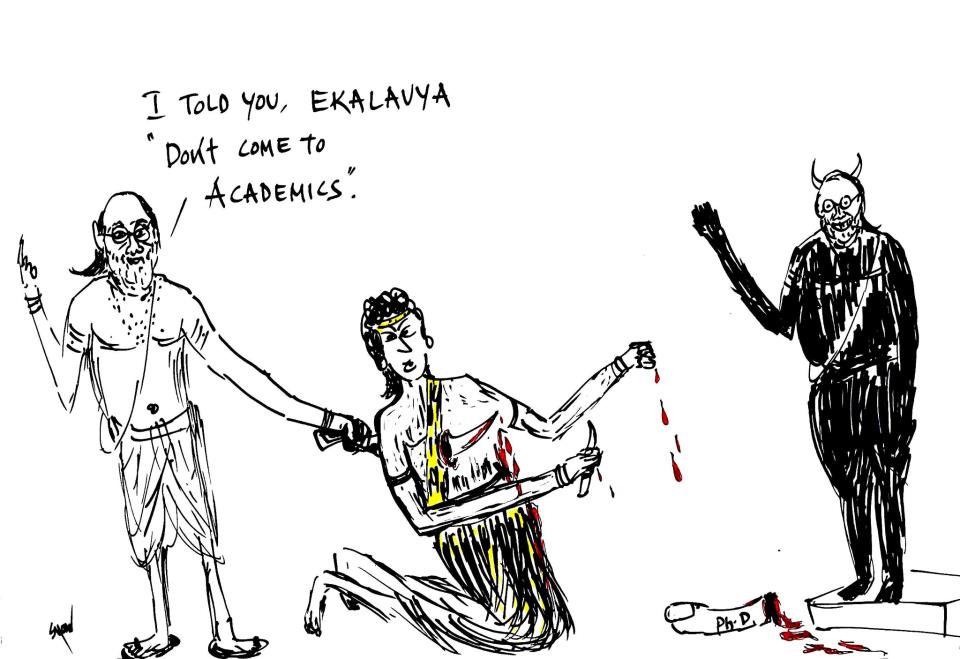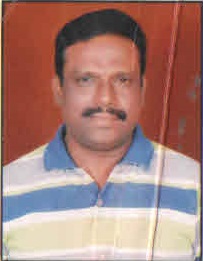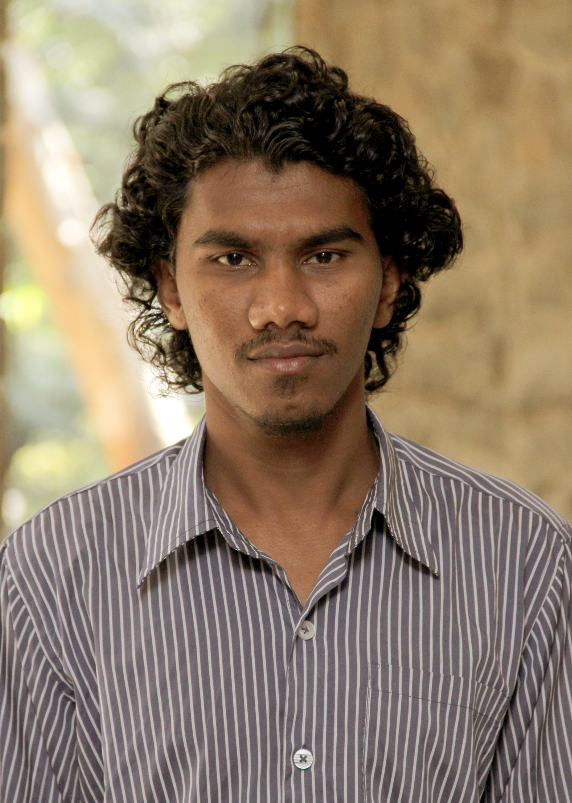by Khalid Anis Ansari
This is a response to Dr. Udit Raj’s (President, Indian Justice Party) note “Rather Upper Castes are nearer to Muslim than Dalits (untouchables)”. For the convenience of readers the full text of the note has been reproduced at the end of this letter.
[I]
Dear Dr. Udit Raj,
Many greetings!
First of all let me thank you for these interesting observations emerging from your own social experience as a political worker. But I think there is a need to go beyond a few individual cases and reflect on this as a collective social phenomenon as well. To begin with I find it slightly discomforting when a mass worker like you especially focuses on the marital transactions between Muslim and Hindu elite and fails to grasp the upper caste content of the ‘Muslims’ in this equation. Let me candidly point out that all the ‘Muslims’ you mentioned in your write-up are upper-caste ashraf Muslims, which form only 15% of the Indian Muslim population. And, the kind of transactions you talk here between upper caste Hindus and Muslims is not recent but has a history going back to medieval India. Whom did Akbar marry (Jodhabai, a Rajput)? Who were the navratnas in Akbar’s court (Birbal, a Brahmin)? Which were the spiritual books that Dara Shikoh (Aurungzeb’s brother) translated into Persian (Upanishads)? What I want to stress is that these kinds of transactions (spiritual, material and marital) between Muslim and Hindu elites is not surprising, but is and has been a persistent feature of Indian life. Let me quote from one of Masood Falahi’s interviews, a young scholar who is working on caste within Indian Muslims:
I also read the works of numerous Indian ulama (religious scholars), who are seen by many of their followers as great intellectuals…I was shocked to discover that most of them actually championed the notion of caste superiority based on birth and gave fatwas about this that went totally against the Quran. This they did by recourse to the notion of what in Arabic is called kafaa, using which they set down rules about possible marriage relations between groups whom they ranked hierarchically… Many of these ulama also believed that it is best to marry within one’s own caste…It is no different from the Hindu case, where religious sanction is provided for caste discrimination and oppression….On the other hand, providing quotations from works which were written in the so-called Islamic period of Indian history, I tried to show how Muslim kings, and the Muslim ruling elites more generally, in collaboration with so-called upper caste Hindus, supported the caste system and the oppression of the so-called low castes, both Hindus and Muslims…they refused to allow so-called low or razil castes, both Hindus and Muslims, to be educated or even to enter their courts, which were preserved as a monopoly of Manuvadi Hindus and Muslims…So, the point is that the so-called golden period of so-called Islamic rule in India, which most Muslim writers never tire of extolling, was essentially the rule of the Manuvadi Muslim and Hindu elites, who dominated and oppressed the so-called low castes, both Hindus and Muslims.
The important point is that this rule of manuwadi Muslim and Hindu elites continues unabated even today with only a slight difference. In medieval period the Hindu elites were the ‘junior partners’ and in modern India the Muslim elites play that role. Moreover, these transactions cannot be adequately explained only by conscious design or prejudice but there are also complex structural factors that enable them. For instance in marriage or business transactions apart from the caste location, the questions of cultural capital, financial capital and entrenched social and business networks (often informed by a curious mix of caste, class and gender) also play a significant role as you yourself observed (“…provided there is security and economic independence”). So let me also add for whatever it is worth that I am also aware of a few marriages, starting from Ambedkar himself and more recently with respect to a few dalit intellectuals and activists, which have happened between dalits and savarna castes. I think modernity also offers a few spaces where these kinds of transgressions of the caste order are possible. But these are probably exceptions than the rule.
But my main problem is the inability of many dalit and bahujan scholars and politicians to break the religious monolith and deal with minority cultures (Muslims, Sikhs, Christians) as stratified along lines of caste as well. So when one is talking of Muslims one is actually talking of at least 80 castes on an all-India level and about 35 castes with respect to Uttar Pradesh, your main site of political activity if I am not wrong. Why does this happen? I think it is because of the discursive grip of a certain dominant discourse that conflates caste system with Hindu religion and explains the presence of caste in minorities as a spill-over effect, as something which should not have happened but has eventually happened because of Hindu influence. While this is obviously a possibility but I am more comfortable in explaining caste as a main mode of social stratification in India, a key element in its political economy, which has been moreover legitimized by all the major religions due to the control of interpretative technology by the dominant castes: in Muslims the Ashrafs (Syed, Sheikh, Mughal, Pathan), in Christians the Syrian or Saraswats, in Sikhs the Jats or Khatris. How does one explain the presence of caste even in those religions that were protest movements against the caste order itself: Sikhism, Buddhism or Jainism?
I think the real threat, not only to Hinduism as you suggest, but also to Islam, Christianity or Sikhism is from within: from the majority of lower castes within all these religions. And, this threat is probably dealt by dividing the Indian population along religious lines through communal violence. So the upper castes of all religious groups develop a communal discourse of ‘Othering’, where the other is always a religious Other. Paradoxically, in the communal violence that follows it is mostly the lower caste-class sections of these religious groups that are largely affected, while the upper caste groups of all religions are busy deciding and negotiating their share in the power-structures. So, you are right when you remark: “Due to political reason, it looks that the Muslims are enemy of Hindus and vice versa”. So this cleavage between religious groups is basically a political fiction contrived by the ruling upper caste sections in all religions to hoodwink the vast majority of lower castes in India. If one honestly computes the upper caste population in each religion, and matches it with their share in power (political, business, cultural, economic, knowledge, bureaucratic, media, etc.), then in most likelihood all the upper caste sections will be found to be overrepresented. For instance, if we take the case of political representation in Muslims, then we find that out of 7500 members from the first to fourteenth Lok Sabha only about 400 members belonged to the Muslim community. Out of these 400 members, only 60 have been OBC/Dalit Muslims. Hence, the representation of ashraf Muslims in Lok Sabha works out to 4.5% that is way beyond their actual population which is only 2.1% (15% of present Indian Muslim population of around 13.4%). So the ashraf Muslims are not only adequately represented but doubly represented in political power. If Sachar Committee had been vigilant enough to include caste as a factor within Muslims in its basic research methodology then we would have had revealing figures in the context of education, industry, employment and this myth of total Muslim backwardness that is now being hegemonically circulated would have been comfortably buried. This is most probably the case in Sikh and Christian communities as well.
Ali Anwar, the leader of Pasmanda Muslim Mahaz, has suggested in one of his interviews:
We see that the politics of communalism, fuelled by both Hindu and Muslim elites, is aimed at dividing us, making us fight among ourselves, so that the elites continue to rule over us as they have been doing for centuries. This is why we in the Mahaz have been seeking to steer our people from emotional politics to politics centered on issues of survival and daily existence and social justice, and for this we have been working with non-Muslim Dalit and Backward Caste movements and groups to struggle jointly for our rights and to oppose the politics of communalism fuelled by Hindu and Muslim ‘upper’ caste elites.
So it is no longer useful to speak of all Muslims as a monolith, or even to speak of Muslim elite with its inherent economic connotations. The political and social aspects of caste within Muslim society must be taken cognizance of and ‘pasmanda’ must be named. It is ‘pasmanda’ which is the natural ally of dalit-bahujans and not the ‘Muslim’, which actually means ashraf castes for all practical purposes. It is these upper caste Muslims that you have largely confronted in your political career because of their domination. But please don’t mistake their behavior to be the behavior of all Muslims per se. The majority of lower-caste Muslims has hitherto remained insignificant and unrecognized in politics. They have started naming and organizing themselves within the rubric of ‘pasmanda’ in the last decade or so. I think it will be great if you can lend weight to their movement. So while I completely respect and have benefitted from your observations Mr. Udit Raj I believe it is important to take these reflections further and translate the dream of horizontal bahujan solidarity (the solidarity of all lower castes irrespective of their religious location) in your actual political practice and strategy. I think this is one of the most important democratic questions in the country today and must be taken seriously.
Many thanks and best regards,
Khalid Anis Ansari
[II]
Muslims are nearer to Upper Caste Hindus than Dalits and OBC
By Udit Raj
The so called upper castes are closer to the Muslims in respect of Beti (marriage), Roti(dinning) and Business but they are very far from dalits( untouchables) rather they nurture hatred , if not consciously then sub consciously. Marriages between the elite upper castes and Muslims are very common provided there is security and economic independence but in the same circumstances that does not happen with dalits. Miss world Sushmita Sen found Pakistan cricketer- Imran Khan as boy friend, Karina Kapoor to Shaif Ali Khan , BJP leader-Murali Manohar Joshi’s daughter is married with Muslim and so is the case with the niece of L K Adwani, Delhi CM’s daughter is also married with Muslim . Top Muslim leaders of BJP Muqtar Abbas Naqvi and Shah Nawaj are married to upper caste hindu . There is race to get Muslim boys in film industry. Sharmila Tagore, Kiran(wife of Amir Khan) , Malaika Arora and her sister, Gauri( w/o Shahrukh Khan), Rankshnda, Rakhi, Saroj Khan , Subhashini etc.are such example. Similarly business relationship between them is very common. In eastern UP, Muktar Ansari is having business partnership in contracts with upper castes and there are many cases in the country but hardly such instances are there where dalits are partners or having business connection. Azim Premji has outsourced the businesses to the upper castes. In elite and educated Muslims, it is very common that the so called upper castes are invited on the occasion of marriages, functions, or personal occasions and the vice versa and very rarely dalits get such opportunities. Due to political reason, it looks that the Muslims are enemy of Hindus and vice versa. I have been doing social and political works for many years and so far not a single upper caste has offered to work with me specially in social field. Though the urban boys and girls are not very casteists and yet they are psychologically conditioned. They get such values through their parents, relatives and society. When the upper caste girls grow and have freedom to choose friends and life partners, the choice is limited either they have to go for their caste guys or Muslims but not for dalits and tribals and there is no preference for backward caste also. Why it is so ? The reason is that they are repeatedly told right from childhood that the dalits are incapable and untouchables. Dalits encroach the opportunities in admission in good institutions and services and if the govt system is not working efficiently then reservation is responsible. Slowly, the upper castes children develop feelings and start abhorring and hating dalits. Had there not been prejudices in upper caste girls, they would have gone for dalit and OBC boys also who are sturdy, handsome and hardworking.
If the upper castes and Muslims are closer then it is welcome. It is definitely promoting integrity and unity of the country. What I want to say that the lower castes are still subject to prejudices and discriminations and the so called upper castes cant adjust with them. Who discriminate to dalits, everyone knows. The question is why some upper castes seem to worry that the Muslims‘s population is increasing or Muslims are threat. The real threat to Hinduism is from within. Hundred times I have experienced that the upper castes prefer Muslims to us.
[Khalid Anis Ansari is with The Patna Collective, New Delhi. He can be reached atkhalidanisansari@gmail.com]
Courtesy: Begumpura










